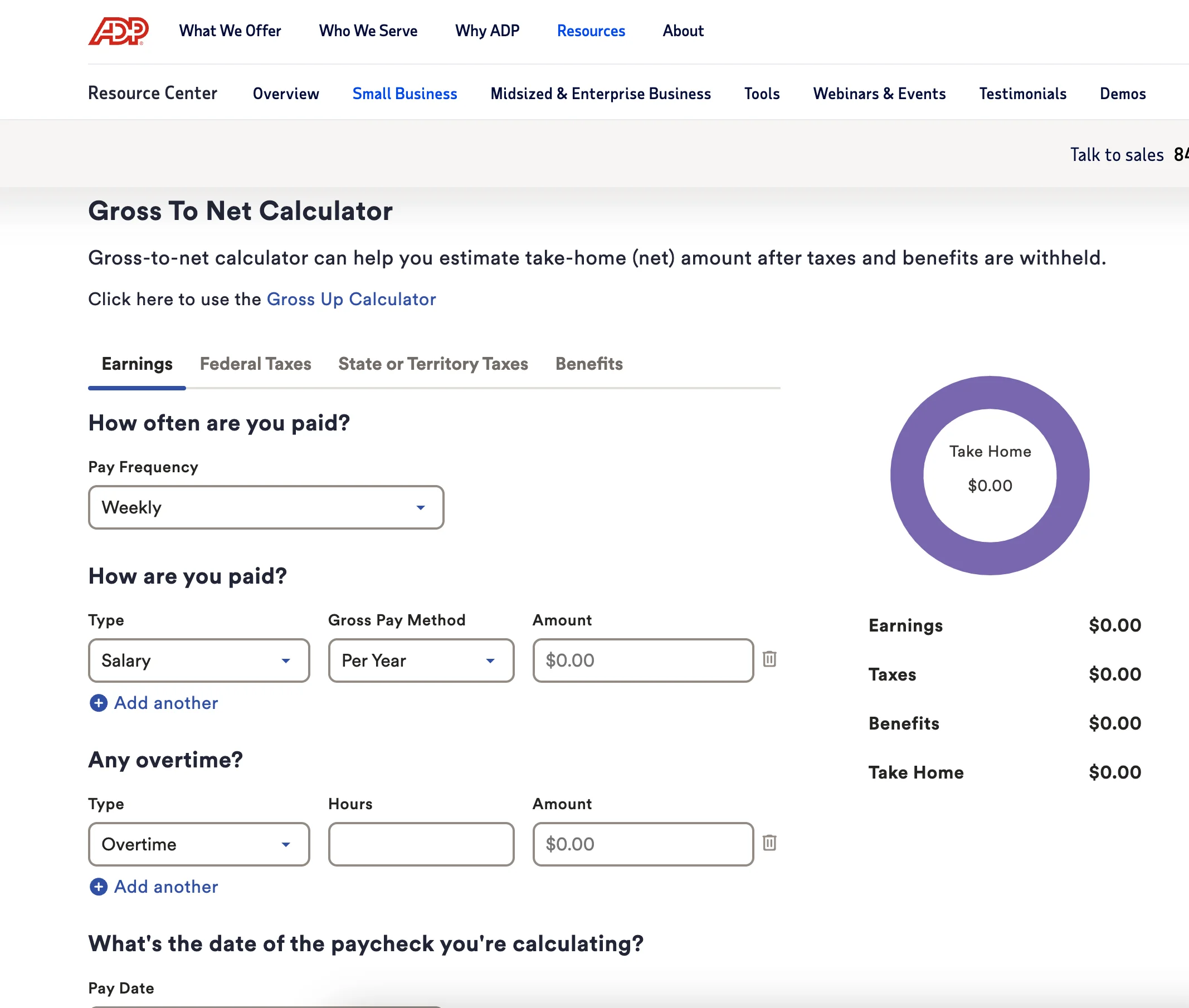
Calculate: $20 an Hour Is How Much a Year After Taxes
Many people ask, $20 an hour is how much a year after taxes? Because understanding take-home pay is vital for smart financial planning. You need to know how much $20/hr makes you in a year (tax-free) to plan your finances well. It might be obvious: $20 an hour is your minimum, but take home pay varies by how many hours you work, your tax bracket and additional deductions.
If you’ve ever wondered, $20 an hour is how much a year after taxes, you’re not alone — it’s a common question for budget-conscious workers. The more money you know, the more you can tell if it provides you enough to buy housing, car, savings, etc.
Here is a breakdown on how to make your annual salary based on an hourly wage, and how much you could be earning after taxes in the United States.
Read more: Upcoming IRS Tax Changes 2025 You Need to Know
Contents
- 1 $20 an Hour Is How Much a Year After Taxes: Calculate Your Income Based On Hourly Wage
- 2 Tools to Calculate Your Take-Home Pay
- 3 The Easy Steps to Learn Paycheck Calculators
- 4 What Affects Your Take-Home Pay?
- 5 $20 an Hour After Taxes: Example Calculations
- 6 How Much Will You Be Paid Per Month?
- 7 Budgeting on a $20/Hour Wage
- 8 Conclusion
$20 an Hour Is How Much a Year After Taxes: Calculate Your Income Based On Hourly Wage
$20 an hour is how much a year after taxes is a critical question for evaluating whether this wage can support your lifestyle. You divide your hourly rate by the number of hours worked in a year to work and then take your annual salary from the hourly rate. Here’s a step-by-step guide:
Determine Your Hourly Rate and Weekdays
- At $20 an hour, that’s typically 40 hours per week
- Change the number if you are working less or more hours per week
Calculate Weekly Income
- Divide $20 by 40 hours and you have your weekly income
- $20/hour x 40 hours = $800/week
Determine Annual Working Weeks
- There are usually 52 weeks in a year, if you’re working full time.
- Add this number if you have paid time off
Calculate Gross Annual Salary
- Multiply your weekly paycheck by number of working weeks
- $800/week x 52 weeks = $41,600/year (gross)
It calculates your annual gross salary, the amount that you’ve made before taxes, deductions, etc.
Important Notes:
To calculate $20 an hour is how much a year after taxes, you need to consider factors like federal, state, and local taxes. If you are an overtime worker, or have less than 40 hours in a week, add that up for a better calculation.
Work part-time and the same processes using your real weektime hours.
Taxes aren’t added to the salary — taxes are very big for the take home pay.
$20 an hour is how much a year after taxes varies by state, filing status, and deductions, making it essential to calculate for accuracy. Having a sense of your annual gross salary, you are then able to calculate your after-tax income based on where you live, if you file for it, and deductions you have.
Tools to Calculate Your Take-Home Pay

Calculating $20 an hour is how much a year after taxes is simpler than you think. Calculating your actual take-home pay is difficult because of tax brackets, deductions and benefits. Fortunately, there are some online calculators to calculate your net income based on your hourly rate, where you live, and your specific situation.
Here are some trusted sources and a quick tutorial on how to apply them:
Recommended Tools
Easy-to-use tool that estimates net pay according to federal and state taxes.
Gives a breakdown of taxes and deductions. Includes state-specific tax calculations.
Best to calculate your federal tax withholding and to find out how deductions affect your paycheck.
Answering $20 an hour is how much a year after taxes’ helps with smart planning.
The Easy Steps to Learn Paycheck Calculators
- Enter Your Income Information
- Enter your hourly rate ($20/hr) or yearly gross revenue ($41,600).
- Set your hours per week (it’s usually 40 if you work full time).
- Select Your State of Residence
- Select the state where you work to compute state taxes.
- Input Filing Status and Deductions
- Specify your tax filing status (single, married, head of household).
- Include any pre-tax deductions (e.g., health insurance, retirement).
- Review the Breakdown (the calculator will give you a rough idea of how much you’ll take home, along with your taxes and deductions)
- Adjust for Accuracy
$20 an hour is how much a year after taxes depends on where you live and file.
Calculate any other deductions or credits to obtain a more accurate figure.
These calculators make the job a bit easier and allow you to budget accordingly.
What Affects Your Take-Home Pay?

- Take-home pay (net income)
This is what you receive after all taxes and deductions are deducted from your gross salary. Even though $41,600/year is the gross income of someone working at $20/hour, the exact dollar amount that gets transferred to your account will vary depending on a few things:
- Federal Income Taxes
Before accepting a job offer, knowing $20 an hour is how much a year after taxes is key to evaluating your take-home pay. Federal taxes are progressive, so some of your income is taxed at higher rates depending on your bracket. If you make $41,600 a year, then you will likely fall into the lower to middle groups.
- State and Local Taxes
There are even states (Florida, Texas) where state income tax is zero so you keep more of your paycheck. Other states like California or New York tax you much more so you get less home.
- Social Security and Medicare Taxes
$20 an hour is how much a year after taxes isn’t just about math — it’s about planning for life’s expenses and savings goals. These are imposed payroll taxes, which together are called FICA taxes, which amount to 7.65% of your gross income.
Figure Example: $41,600 7.65% = $3,182.40 per year withdrawn.
- Deductions and Benefits
You also lose out on take-home pay due to your contributions to health insurance, retirement accounts (401(k)s, etc.
Others such as pre-tax retirement savings lower your taxable income, and thus your federal tax liability.
- Filing Status and Dependents
If you’re working full-time, you might ask, $20 an hour is how much a year after taxes? to understand your true earning power. Taxes are higher for single filers than they are for joint filers or dependents.
Tax breaks such as the Earned Income Tax Credit can increase your net income too, depending on your situation.
Knowing $20 an hour is how much a year after taxes is the first step toward creating a realistic and achievable budget.
Read more: 6 States With Low Cost of Living and High Quality of Life (Map)
$20 an Hour After Taxes: Example Calculations
To make the value of $20/hour after taxes more visible here are some examples from different situations:
Example 1: Single Filer in a Low-Tax State (Texas)
- Gross Annual Income: $41,600
- Federal Income Tax: Approx. $3,340
- FICA Taxes (Social Security and Medicare): $3,182
- State Income Tax: $0 (Texas has no state income tax)
- Take-Home Pay:
$41,600 – ($3,340 + $3,182) = $35,078 annually (~$2,923/month).
The answer to $20 an hour is how much a year after taxes depends on where you live and your personal tax situation.
Example 2: Single Filer in a High-Tax State (California)
- Gross Annual Income: $41,600
- Federal Income Tax: Approx. $3,340
- FICA Taxes: $3,182
- State Income Tax: Approx. $2,080
- Take-Home Pay:
$41,600 – ($3,340 + $3,182 + $2,080) = $33,998 annually (~$2,833/month).
$20 an hour is how much a year after taxes is a common concern for anyone aiming to estimate their net income.
Example 3: Married Filing Jointly with Dependents in a Mid-Tax State (Illinois)
- Gross Annual Income: $41,600
- Federal Income Tax: Approx. $2,500 (lower due to dependents)
- FICA Taxes: $3,182
- State Income Tax: Approx. $1,248 (flat 3% rate in Illinois)
- Take-Home Pay:
$41,600 – ($2,500 + $3,182 + $1,248) = $34,670 annually (~$2,889/month).
You might be surprised by how taxes impact the answer to $20 an hour is how much a year after taxes. These are some of the ways in which taxes and individual circumstances aren’t equal. Enter your state, filed status and deductions in an online paycheck calculator for an accurate estimate.
How Much Will You Be Paid Per Month?

For financial clarity, calculating $20 an hour is how much a year after taxes ensures you know what to expect in your bank account. Let’s take the annual gross salary and subtract taxes and deductions in order to work out your $20/hour income monthly based on our take-home pay.
A question like $20 an hour is how much a year after taxes highlights the importance of understanding paycheck deductions.
Here’s how it breaks down:
Step 1: Gross Monthly Income
- Hourly Rate: $20/hour
- Weekly Hours: 40 hours
- Gross Weekly Pay: $20 × 40 = $800
- Gross Annual Pay: $800 × 52 weeks = $41,600
- Gross Monthly Income: $41,600 ÷ 12 months = $3,466.67
Step 2: Monthly Take-Home Pay Estimate
The query $20 an hour is how much a year after taxes often leads to deeper conversations about personal budgeting and financial literacy. Federal income tax, Social Security, Medicare, and state taxes (if they exist) add up to take home pay of between $2,800 and $3,000. Exactly how much depends on things like:
- The state in which you reside (no state income tax vs high state income tax).
- Status of filing (unmarried, single or household head).
- Deductions and contributions (retirement plan, health coverage).
Example Calculations:
| Scenario | Gross Monthly Income | Deductions | Take-Home Pay |
|---|---|---|---|
| Low-Tax State (e.g., Texas) | $3,466.67 | Approx. $550 (federal + FICA taxes) | ~$2,916.67 |
| High-Tax State (e.g., California) | $3,466.67 | Approx. $650 (federal + state taxes) | ~$2,816.67 |
| Married Filing Jointly, Mid-Tax State | $3,466.67 | Approx. $580 (reduced federal + state taxes) | ~$2,886.67 |
$20 an hour is how much a year after taxes? It’s a key budgeting question. Your take home pay every month is the most important thing when it comes to setting a budget and making provisions for expenses.
Budgeting on a $20/Hour Wage
At $20/hour, that’s around 2,800–$3,000 a month in take home pay, state taxes and deductions included. A budget that is in balance makes sure money is set aside for both the necessary and the discretionary items and saved for a future endeavor. Wondering $20 an hour is how much a year after taxes? Let’s break it down.
Here’s an example budget breakdown based on a $2,900 take-home pay every month.
| Category | Percentage of Income | Amount | Description |
|---|---|---|---|
| Housing | 30% | $870 | Rent or mortgage payment. Aim to keep housing costs below 30% of income. |
| Transportation | 15% | $435 | Includes car payments, insurance, gas, and public transportation costs. |
| Groceries | 15% | $435 | Covers food and household essentials. Adjust based on dietary needs and family size. |
| Savings | 10% | $290 | Emergency fund, retirement contributions, or short-term savings goals. |
| Utilities | 10% | $290 | Electricity, water, internet, and phone bills. |
| Healthcare | 5% | $145 | Health insurance premiums, copays, and medical expenses not covered by insurance. |
| Debt Payments | 10% | $290 | Credit card payments, student loans, or other personal debt obligations. |
| Discretionary Spending | 10% | $290 | Entertainment, dining out, hobbies, and non-essential purchases. |
| Miscellaneous/Buffer | 5% | $145 | Unexpected expenses or additional spending flexibility. |
Key Tips:
- Housing: If housing is more than 30% of income, roommates or moving somewhere else can be an option.
- Transport: Make the most of public transportation or rideshare when possible.
- Money saved: Build a 3–6 month’s worth of expenses emergency fund and contribute to retirement.
- Spending Options: Monitor discretionary spending so you do not go over budget.
Make adjustments to the percentages based on your lifestyle, your budget and your place of residence to get an achievable and affordable budget.
Conclusion
The answer to $20 an hour is how much a year after taxes helps shape your budget. That’s $20 an hour, which is equivalent to a gross annual income of $41,600. But, if you take out tax, Social Security, and other deductions, your take-home salary will probably be between $33,000 and $36,000 a year or $2,800–$3,000 a month. The amount is then dependent on things such as your state, filing status, and deductions.
You can look at the ADP Paycheck Calculator or SmartAsset Paycheck Calculator and get a clear picture of your unique financial situation. You can budget for things, plan for savings, and invest in your future with accurate estimates. Make a budget that works for you! Use these resources to manage your income!
Discover more from Money-Saving Tips & Personal Budgeting
Subscribe to get the latest posts sent to your email.





















Post Comment